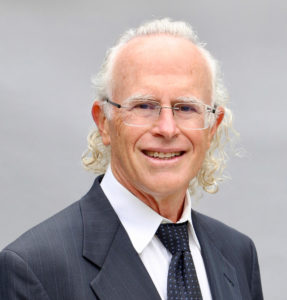Leaders of Tomorrow: R. Gary Sibbald, BSc, MD, FRCPC (Med) (Derm), MEd
It’s an interesting evolution, as paths and passions change, that R. Gary Sibbald, MD, professor of Public Health and Medicine, University of Toronto, found himself focusing on wound care, treatment and prevention. As a dermatologist, Sibbald was approached in 1985 to do a study on hypertonic crystalline saline gauze as an advanced dressing. As a result of that study, he branched out into educational wound care events across Canada. “My primary passions now are wound care and education,” he says.
In 1995, Sibbald co-founded the Canadian Association for Wound Care (CAWC) to foster the importance of interprofessional wound care, which has improved treatments in LTC settings across North America. The cornerstone of the CAWC educational institute is the International Interdisciplinary Wound Care Course (IIWCC) held at the University of Toronto, which he co-founded with Diane L. Krasner, PhD, RN, CWCN, CWS, MAPWCA, FAAN. “Students attend a residential weekend program and complete self-study modules to earn certificates of completion, which can be part of the Master’s of Science/Community Health Program in the Dalla Lana School of Public Health at University of Toronto,” Sibbald explains.
Introducing our Leaders of Tomorrow awardsLong-Term Living is proud to introduce a new annual awards program: Leaders of Tomorrow. The five rising leaders featured daily this week were nominated and chosen by Long-Term Living’s esteemed editorial advisory board. Read more about the awards program here. Monday: Addie Abushousheh, executive eirector, Association of Households International (AHHI) Tuesday: Govind Bharwani, PhD, director of nursing ergonomics and Alzheimer's care, Nursing Institute of West Central Ohio, Wright State University, Dayton, Ohio Wednesday: Nancy Brody Kleinberg, CEO and administrator, Park Pleasant Nursing and Rehab Center, Philadelphia, Pa. Thursday: R. Gary Sibbald, BSc, MD, FRCPC (Med) (Derm), MEd, professor of public health and medicine, University of Toronto, Ontario Friday: James Taylor, president, Sodexo Senior Living, Gaithersburg, Md. |
The IIWCC is now offered throughout the world with courses that have been held at Stellenbosch University in South Africa and at Sheikh Khalifa Medical City in the Middle East. “For the past three years, we’ve met in Cape Town, South Africa, and have trained more than 95 doctors, nurses and other professionals to be team leaders in Africa,” he states. Courses have also been convened in Saudi Arabia, educating 110 attendees from 10 Gulf countries, and the University of Tehran in Iran. This educational opportunity creates thought leaders in these areas. They can teach others what they’ve learned which, in turn, helps these health professionals reach more people. A course is planned for the United States in the near future.
“Type 2 diabetes is a major concern in these areas of the world where medical assistance is not always readily available,” Sibbald explains. He notes that 85 percent of nontraumatic lower limb amputations in people with diabetes begin with a foot ulcer. “Eighty percent of those amputations are avoidable,” he notes. This figure underscores the importance of vigilant risk assessment for diabetic ulcers. Dr. Sibbald and the Canadian team of wound healers have established an Interprofessional Diabetic Foot Center in Georgetown, Guyana in South America, where the major foot ulcer amputations rate has decreased by 62 percent.
At scheduled Wound Healing Clinic Days held at Women’s College Hospital, as part of the IIWCC, in Toronto, Sibbald invites attendees to assess real cases for compressive treatment plans. Hard-to-manage wounds are analyzed by the course participants with input from an international faculty of experts.
Sibbald is co-editor of Chronic Wound Care: A Clinical Source Book for Healthcare Professions, fifth edition. He has written many articles and book chapters on the subject.
“When it comes to Skin Changes At Life’s End [SCALE], it is important to recognize that not all pressure ulcers are avoidable. As the body dies, the skin dies,” Sibbald says. He advises interdisciplinary teams to keep current on wound care treatments and products. “The days of one lone soldier doing it all are gone. It’s about improving outcomes through interprofessional collaboration.”
Sibbald continues to share his knowledge and expertise and is truly a recognized leader in the field of chronic wound care and education.

Sandra Hoban was on I Advance Senior Care / Long-Term Living’s editorial staff for 17 years. She is one of the country’s longest-serving senior care journalists. Before joining Long-Term Living, she was a member of the promotions department at Advanstar Communications. In addition to her editorial experience, Sandi has served past roles in print and broadcast advertising as a traffic and talent coordinator.
Related Articles
Topics: Articles , Clinical











